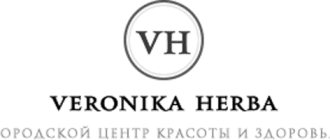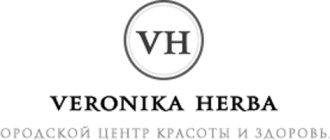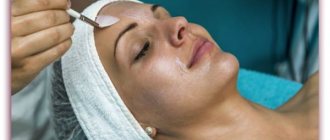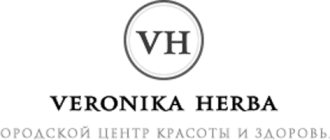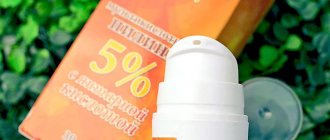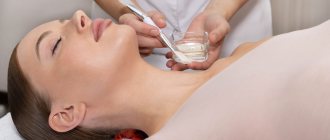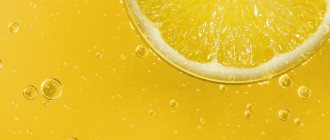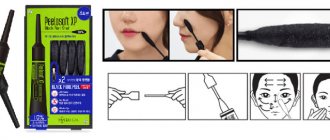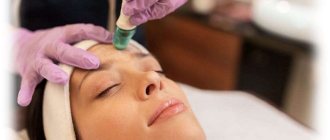From this article you will learn:
- Features of the facial peeling procedure
- Types of peelings for facial skin
- Chemical peeling for face
- Mechanical facial peeling
- Ultrasonic facial peeling
- Laser facial peeling
- Choosing the type of facial peeling based on age and skin type
Despite the large number of types of facial peels in cosmetology, they have similar tasks. Each helps cleanse and rejuvenate the skin. Depending on the depth of penetration, the substances included in the peels remove dead cells, stimulating regeneration.
The effectiveness of the procedure is also determined by the method of exposure. Some peels mechanically remove dead skin cells, while others dissolve them chemically. We will talk about the intricacies of using various types of peelings for the face and décolleté in this article.
Superficial and medium chemical peels
Principles of action and types of chemical peelings - chemical peeling is based on the action of chemical agents (most often acids) and allows you to remove dead skin layers at the same chemical peeling depth, while simultaneously stimulating the regeneration of young cells.
Today, this method of aesthetic medicine still remains one of the most popular. The popularity of chemical peeling is due to its high efficiency, combined with a relatively low cost. Unlike their physical and mechanical counterparts, chemical peels are simple to perform and do not require expensive equipment. If they are performed according to indications and, most importantly, by a cosmetologist, their results are truly impressive! Principles of action and types of chemical peels remove dead skin layers by stimulating the regeneration of young cells.
Depending on the depth of skin damage, all chemical peels are divided into superficial (glycolic peeling, milk peeling, retinoic peeling, pyruvant peeling) and medium. Superficial ones have an effect within the stratum corneum of the skin, middle ones penetrate the skin to the entire depth of the epidermis without damaging the basement membrane, and deep ones affect the basement membrane - partially or completely. It should be noted that deep chemical peeling is a type of surgical operation. And it is almost never used in the practice of a dermatocosmetologist of aesthetic medicine.
Any chemical peel is essentially a chemical burn to the skin. Correct pre-peeling preparation and the use of modern peeling compounds can minimize the risk of complications. Strict control of the depth of damage and creation of optimal conditions for subsequent skin rehabilitation. The Medic Control Peel line includes not only preparations for professional peeling. But also a full range of additional products for pre-peeling preparation and home skin care during the rehabilitation period. And also to maintain treatment results. With such a reliable arsenal at your disposal, you can perform chemical peels in summer and winter.
Indications for use:
- skin aging (wrinkles, decreased turgor, sagging, microrelief disturbances);
- hyperpigmentation of various etiologies;
- problematic skin (acne, rosacea, seborrheic and actinic keratomas, ichthyosis, xeroderma);
- post-acne scars and other etiologies.
Chemical peeling procedure
Any chemical peel involves three stages:
- Pre-peeling preparation;
- Peeling procedure;
- Post-peeling rehabilitation.
Pre-peeling preparation is a very important stage that determines the depth and controllability of the peeling and its effectiveness. It is carried out at home and ensures equalization of the thickness of the stratum corneum, stabilization or inhibition of melanogenesis, and also stimulates skin regeneration (especially aging skin).
A number of techniques have been developed for chemical peeling, each of which has its own characteristics. The peeling composition can be applied to the skin using a brush, gauze pads, cotton pads or cotton swabs. The time of its exposure is determined by objective factors (erythema, swelling/pastyness, frost effect). So and the patient’s subjective sensations (pain, burning). A clear knowledge of the peeling protocol helps to complete the procedure quickly and confidently.
The goal of post-peeling rehabilitation is to level the patient’s subjective discomfort and prevent side effects and complications. Anti-inflammatory and antioxidant therapy, stimulation of regenerative processes and protection of the skin from adverse exogenous factors.
The Medic Control Peel line contains a wide range of special products that meet all of the above requirements.
Chemical peeling is an effective method for correcting involutional changes in the skin and atrophic scars. Milk peeling is indispensable for skin whitening in order to improve its texture. Knowledge of the peculiarities of the interaction of a chemical agent with the patient’s skin and methods for determining the depth of penetration of the peeling composition allows one to achieve excellent results and minimize the risk of complications. Another advantage of the technique is the ease of its execution by a cosmetologist.
Acne vulgaris: treatment with Azelik® gel
Peeling is only an auxiliary measure for acne vulgaris; treatment should be prescribed by a dermatologist, not a cosmetologist. One of the drugs used in the treatment of mild to moderate acne vulgaris is Azelik®5 gel. Its main active ingredient is azelaic acid5. The drug has the following properties5:
- exhibits antimicrobial activity against Propionibacterium acnes and Staphylococcus epidermidis;
- helps normalize keratinization processes;
- helps reduce the level of fatty acids;
- helps relieve inflammation by reducing the metabolism of neutrophils and their production of free radical forms of oxygen.
Azelik® gel should be used twice a day, applied to clean, dry skin5.
*acne
Types of Chemical Peels
The effect of chemical peeling depends on the depth of skin damage. With increasing depth, the effectiveness of the procedure increases, but at the same time the frequency of possible complications, the duration and complexity of the rehabilitation period increases.
The choice of chemical peel depends on:
- skin condition;
- features of healing of the wound surface;
- areas of expected impact;
- the type of chemical agent included in its composition, its concentration and pH;
- forms of applied peeling composition (gel, lotion, cream, etc.);
- technique and number of applications;
- quality of patient skin preparation.
Based on an assessment of the nature and extent of age-related and pathological changes, taking into account skin type. Classification of signs of photoaging and other objective data. The specialist selects the optimal peeling composition and the depth of its effect, stimulating the regeneration of young cells.
How much do the procedures cost?
Before you sign up for the procedure, it’s worth finding out: how much does chemical facial peeling, diamond or mechanical, cost? Exact prices depend on several factors:
- From the city in which the salon is located;
- From the location and level of the cabin;
- From education as a cosmetologist;
- Depending on the type of cleaning and materials used.
Average rates will be displayed in the table below.
| Chemical | 850 rubles |
| Mechanical | 1600 rubles |
| Ultrasonic | 1500 rubles |
| Laser | 6500 rubles |
| Fruit | 1450 rubles |
| Diamond | 2200 rubles |
This is the approximate price for the procedures. You can find out specific prices in the salon of your choice.
Make sure that the final price includes all additional components: facial cleansing, application of a moisturizing mask, powder or cream to close pores. In some salons, these services are calculated separately, which can be an unpleasant surprise when paying.
Peeling in summer
✹❀
There is still an opinion that chemical peelings are impossible during periods of high solar activity. Indeed, in some cases it is undesirable to perform peeling in the summer. However, if you choose the right chemical agents and home care products. Then, by performing summer peeling, cosmetologists can successfully solve a number of aesthetic problems in the summer.
Criteria for choosing the type of chemical peeling:
- indications and planned depth of skin damage;
- mechanism of action of the peeling composition;
- contraindications for peeling;
- the patient’s lifestyle (bad habits, social status);
- presence of concomitant diseases;
- the patient's real wishes;
- patient requirements for the terms and conditions of the post-peeling period.
Glycolic peeling
✹❀❄
remove dead skin layers by stimulating the regeneration of young cells aesthetic medicine by a cosmetologist
Glycolic peeling is the most common chemical superficial peeling based on alpha hydroxy acids. Glycolic acid has the most active molecule of all AHA acids, due to which preparations based on it have a pronounced exfoliating, stimulating and antioxidant effect. Peeling with glycolic acid is used to solve a wide range of aesthetic problems: age-related manifestations, hyperpigmentation, skin texture disorders, acne and post-acne scars. The concentration of glycolic acid in AHA peels varies from 30% to 70%, but pH plays an equally important role here. The most effective glycolic peels are characterized by a pH value below 2.0, which implies the mandatory use of a neutralizing composition in the procedure. In addition to glycolic peels based on pure glycolic acid, there are combined glycolic peels based on drugs that include acids such as phytic, kojic, lactic, and salicylic.
Thanks to various combinations of ingredients in peeling products, a specialist has the opportunity to work on a particular problem, taking into account the individual characteristics of the patient as much as possible. It should be noted that all glycolic peels based on alpha hydroxy acids are highly effective, easy to perform and have a short rehabilitation period. The effect of glycolic peeling has been well studied and can be accurately predicted. This makes glycolic peeling extremely popular among specialists. So it is among clients of cosmetology clinics and cosmetologist doctors. Principles of action and types of chemical peels remove dead skin layers by stimulating the regeneration of young cells.
Milk peeling
✹❀❄
Other popular peeling preparations are formulations based on lactic acid. They are characterized by high penetrating ability, which allows their use in patients with severe hyperkeratosis caused by both unfavorable exogenous factors and skin aging. Due to the fact that lactic acid is a component of the natural moisturizing factor of the epidermis. Milk peeling interacts very delicately with the skin and maintains a high level of moisture. Recommended for the correction of cosmetic defects, dry and aging skin, aesthetic medicine.
How to do it: stages of exfoliation
The procedure for cleansing facial skin in a beauty salon is carried out according to an algorithm, regardless of the type of peeling. Main stages:
- Preparation . Before treatment, the skin should be prepared. In one case, the surface is simply cleaned of cosmetics with water and tonic, then degreased. In another, more thorough preparation is required:
- steaming;
- scrubbing;
- light peeling.
- Cleansing:
- a special composition is applied to the prepared skin in one or several layers;
- the device is connected, the effect on the epidermis occurs;
- The cleansing procedure is carried out strictly according to time or visual changes in the skin.
- the remaining solution is removed with a clean napkin;
- then wash off with warm water;
- a neutralizer is applied (in case of dry cleaning);
- washed off again with water;
- moisturizing and nourishing cosmetics are applied.
Medium or deep facial cleansing is best done in the cold season (late autumn, early winter). At this time, the sun's rays are not as active as in summer, so the risk of developing pigmentation after cleansing will be minimal .
This is what the face looks like in the photo before and after peeling by a cosmetologist in the salon:
❄
Retinoic peels belonging to the superficial category have gained particular popularity recently. Retinoic peels are also known as “yellow peels” or “weekend peels” (due to the short recovery period). The mechanism of action of retinoic peels is fundamentally different from the mechanism of action of other peeling agents. The retinoids included in the “yellow peeling” do not damage the skin, do not destroy living cells, and do not coagulate proteins. They interact with specific nuclear receptors of cells. Principles of action and types of chemical peels remove dead skin layers by stimulating the regeneration of young cells.
These receptors have been found in basal keratinocytes, melanocytes and fibroblasts. Thus, as a result of the effect of retinoic peels on the epidermis, the level of mitotic activity of basal keratinocytes increases, the processes of differentiation and keratinization, as well as melanogenesis are normalized, the synthesis of epidermal lipids and components of the intercellular matrix of the dermis is activated and stimulated, and the number of atypical cells is reduced. As a result, skin aging slows down, its texture improves, its relief is evened out, and a pronounced rejuvenating and brightening effect is achieved. In addition, yellow peel retinoids have a powerful antioxidant effect. Histological studies have shown that the stimulating effect of retinoic peels on the cellular structures of the skin persists for 4 months after the last application of retinoids. Other important reasons for the demand for retinoic peels are their atraumatic nature and high safety of use, a short post-peeling period and an extremely low rate of complications. Therefore, retinoic peeling can be carried out in the summer.
The benefits of regular intensive care
Our skin consists of several layers. The top layer, the epidermis, is constantly renewed: dead cells are exfoliated and replaced by young ones. It is on this systemic “circulation” that youth and healthy skin depend. With age and under the influence of other factors, the process of cell renewal slows down. As a result, the complexion becomes dull, pores become clogged, and the skin looks uneven. Peels can prevent such problems.
Regular exfoliation helps not only to cleanse the skin of the keratinized layer of cells, but also to cope with the effects of acne, blackheads, age spots, and make scars less noticeable. With a systematic approach, peeling fights the first signs of aging and corrects existing ones: smoothes the skin, eliminates facial wrinkles, improves complexion, makes the skin more hydrated and smooth.
Almond peeling
✹❀❄
Superficial almond peeling is in constant demand among clients of beauty salons. This is due to its many benefits. Almond peeling has a moisturizing, stimulating and antioxidant effect and is ideal for combating the initial signs of skin aging. Professional almond peeling Medic Control Peel has an additional antimicrobial effect, therefore it is often used to treat problem skin with signs of acne. The mandelic acid molecule is quite large, which determines the gentle effect of the peeling composition on the skin and almost completely eliminates the risk of developing post-peeling hyperpigmentation. Delicate almond peeling is recommended for year-round use for patients with skin of any type. Including dark skin by stimulating the regeneration of young cells of aesthetic medicine by a cosmetologist.
Salicylic peeling
✹❀❄
Salicylic acid was first isolated from willow bark in the 19th century. Having a pronounced keratolytic effect and high penetrating ability, this beta-hydroxy acid causes peeling of the epidermis. At the mouth of the hair follicle, thereby preventing the formation of comedones. Salicylic acid has a powerful anti-inflammatory and antiseptic effect, reduces the activity of the sebaceous glands. But it does not penetrate into the deep layers of the skin and causes virtually no side effects. Peels based on pure salicylic acid are recommended for patients with thick and liquid seborrhea. Acne, initial and moderate signs of age-related skin changes, photoaging, hyperpigmentation, wrinkles, skin microrelief disorders. They are also used to stimulate exfoliation in ichthyosis and psoriasis. Salicylic acid is included in many peeling preparations. And thanks to its excellent ability to “loose” the stratum corneum of the skin. Salicylic peels are often used in protocols for other chemical peels (for example, retinoic). To improve their penetration and obtain a more pronounced result of aesthetic medicine by a cosmetologist.
✹❀❄
Jessner peeling is a classic combined mid-superficial peeling, the activity of which is determined by the ingredients it contains. Lactic and salicylic acids, as well as resorcinol. The effectiveness of Jessner peeling depends on the procedure technique: the more layers of peeling composition are applied. The deeper the penetration will be. This allows the doctor or cosmetologist to individually select the number of layers - from 1 to 8. For each specific patient, thus achieving an optimal result. Peeling causes active large-plate peeling and has a good keratolytic effect. Due to this, it is effective for hyperkeratosis, pronounced age-related changes and skin texture disorders.
❄
The principle of action of TCA peeling is based on the pronounced keratolytic and stimulating effect of trichloroacetic acid. The depth of penetration of the peeling composition is determined not only by the concentration of acid in it. But also the number of layers applied to the skin. Moreover, as soon as the application of peeling is completed, its penetration into the tissue also stops. Because trichloroacetic acid is quickly neutralized in the skin layers, causing protein coagulation. TCA peeling ensures renewal of the epidermis, stimulates repair and metabolism processes, which helps improve skin texture. As well as correction of wrinkles, various types of scars (post-traumatic, post-operative, post-acne) and other disorders of the skin relief. Trichloroacetic acid does not have a systemic effect on the body.
Contraindications
Despite the fact that all-season peeling can be performed without restrictions on the time of year, it is important to take into account the body conditions and diseases in which intensive effects on the skin are contraindicated.
These include:
- disorders of the cardiovascular system;
- diabetes;
- epilepsy;
- chronic skin diseases;
- infectious diseases;
- intolerance to peeling components;
- skin damage;
- taking hormonal medications;
- insolation;
- acute condition: fever, sore throat, cough, etc.;
- pregnancy and lactation - it is permissible to use soft peels, for example, enzyme peels.
| All-season peeling is an effective way to keep your skin beautiful and healthy at any time of the year. But the procedure will only be beneficial if it is done correctly, taking into account many nuances. To ensure you are pleased with the result, before performing peeling, be sure to consult with an experienced cosmetologist and follow his recommendations. |
